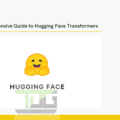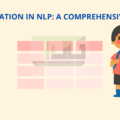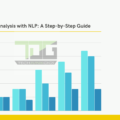In the dynamic world of artificial intelligence, Retrieval-Augmented Generation (RAG) stands out as a revolutionary approach. By merging retrieval systems with the creative capabilities of Large Language Models (LLMs), RAG enables AI systems to deliver precise, context-aware, and scalable solutions for a variety of real-world applications.
However, selecting the right RAG framework is crucial for success. With choices like LangChain, Haystack, and LlamaIndex, understanding their strengths and unique features is essential. This guide provides a comprehensive comparison of the leading RAG frameworks for 2025, simplifying your decision-making process. Let’s dive into the world of cutting-edge AI frameworks!
- Ease of Integration 🛠️
- Seamless integration with workflows via intuitive APIs and pre-built connectors.
- Highlight: Faster time-to-market with minimal configuration.
- Retrieval Models Supported 🔗
- Support for dense, sparse, or hybrid retrieval models.
- Highlight: Hybrid models balance precision and scalability.
- Vector Database Compatibility 📊
- Integration with databases like Pinecone, Weaviate, or FAISS.
- Highlight: Critical for applications requiring high-speed similarity search.
- Scalability 🚀
- Suitable for both small-scale experiments and large-scale deployments.
- Highlight: Future-proof solutions for growing projects.
- Latency ⚡
- Low response times ensure real-time usability.
- Highlight: Essential for live applications like chatbots and analytics tools.
- Deployment Options 🌐
- Cloud, on-premises, or hybrid setups to meet diverse needs.
- Highlight: Tailored deployment for different environments.
- Multi-LLM Support 🧠
- Compatibility with LLMs such as OpenAI GPT and HuggingFace Transformers.
- Highlight: Versatility in adapting to evolving AI technologies.
- Fine-Tuning 🛠️
- Domain-specific model optimization.
- Highlight: Enhances accuracy and relevance of results.
- Documentation 📖
- Well-structured documentation simplifies learning and troubleshooting.
- Highlight: A valuable asset for both beginners and experts.
- Ecosystem 🌍
- A strong community and plugin support ensure innovation.
- Highlight: Accelerated development with community-driven enhancements.
1. LangChain
- Strengths: Modularity, extensive deployment options, and a thriving ecosystem.
- Use Case: Ideal for dynamic AI workflows across industries.
- Highlight: Comprehensive integration capabilities.
2. Haystack
- Strengths: Enterprise-grade scalability and hybrid retrieval support.
- Use Case: Large-scale, stable deployments in business settings.
- Highlight: Robust features for hybrid retrieval models.
3. LlamaIndex
- Strengths: Simplicity and dense retrieval optimization.
- Use Case: Lightweight projects or niche AI solutions.
- Highlight: Streamlined design for focused use cases.
Comparison Table
Framework |
Modularity |
Scalability |
Multi-LLM Support |
Documentation |
Ecosystem |
Best For |
|---|---|---|---|---|---|---|
LangChain |
High |
High |
Yes |
Excellent |
Robust |
Modular and versatile uses |
Haystack |
Moderate |
High |
Yes |
Good |
Growing |
Enterprise-grade environments |
LlamaIndex |
Moderate |
Moderate |
Limited |
Good |
Developing |
Lightweight niche projects |
Conclusion: Choosing the Right RAG Framework
Each framework excels in specific areas:
- LangChain: Best for modularity and dynamic applications.
- Haystack: Ideal for enterprises requiring robust hybrid retrieval.
- LlamaIndex: Tailored for smaller-scale or focused projects.
Align your choice with your project’s goals, scalability needs, and technical expertise. These frameworks are tools for driving innovation and creating smarter AI-powered solutions.




Leave a Reply